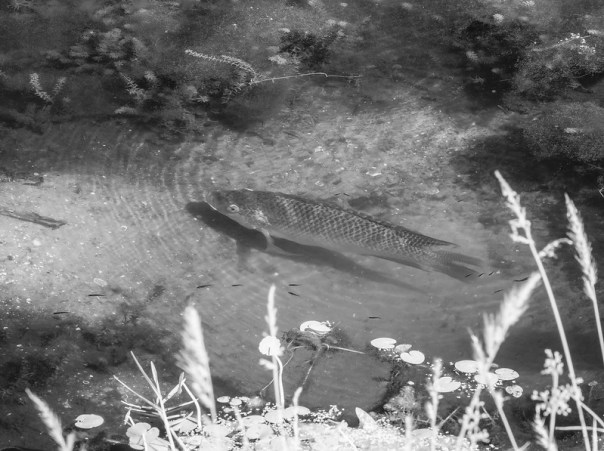How much time did it take to make the image you see here? That’s an interesting question – I’m glad you asked!
Short answer: 1.3 seconds. Medium answer: 5 months. Long answer: 13.8 billion years.
 Rocks, water, light and time – in black and white
Rocks, water, light and time – in black and white
To begin with:
- Preparing for a photo trip and gathering what you need before you leave takes time.
- Traveling to a location and back can be minutes or days – you have to decide whether the potential photos at a location are worth the time to go. Or just go anyway and explore!
- Once there, you sometimes see a spot off the path or a little further on and you have to decide if that image is worth the time and effort to get to.
- Then for each photo, it takes time to set up for an image (tripod, lens selection, etc.) and you often have to wait for conditions or subjects to cooperate.
Only after all that do you get to decide on a shutter speed to control how long your exposure is – in this example, 1.3 seconds.
Then, when you get home:
- It takes time to go through all your photos, decide which ones are worthy of attention and process them.
- You also have to spend time posting images and writing about them.
I made this image 5 months ago at Amicalola Falls State Park in Georgia and you’re just now seeing it. And even before all that could happen:
- Cameras had to be invented – (maybe 1550?) and film too (~1816).
- Modern digital cameras had to be refined and lots of software written.
- Each of us has to invest time learning how to photograph, how to post process, and practicing our skills.
And even before all that can happen:
- The universe (starting ~13.8 billion years ago) and solar system (~4.6 billion years ago) had to form.
- Life (3.5 billion years?) and humans (~2.5 million years) had to evolve.
- Geology had to happen: Mountains had to rise up and erosion had to form rivers, and forests had to grow.
- And civilization and culture had to progress to the point where leisure time is available to make photos for the fun of it and people have time to read blogs about them.
“Time is the indefinite continued progress of existence and events that occur in apparently irreversible succession from the past through the present to the future.” – Wikipedia
Each of us only has so much time and we have to decide how to spend it. Thanks so much for taking the time to read my blog. Now – go make some photos!
©2018, Ed Rosack. All rights reserved

















































